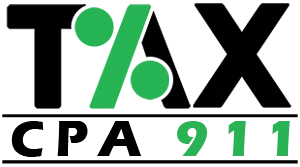IRS debt is stressful. Especially when penalties, interest, or liens add to the balance. The IRS Fresh Start Program, introduced in 2011, expanded access to tax relief tools that make repayment more manageable. Knowing how it works and who qualifies can help you take steps toward resolving debt.
What Is the IRS Fresh Start Program?
The Fresh Start Program isn’t a single program, but rather a set of policy changes the IRS made to improve taxpayer access to relief.
It expanded eligibility for Installment Agreements (IA), Offer in Compromise (OIC), and penalty relief,. It also raised the threshold for filing federal tax liens.
These changes were designed to encourage taxpayers to stay compliant while still collecting what’s owed.
Key Benefits of the Program
- Streamlined Installment Agreements: Taxpayers who owe $10,000 or more in combined tax, penalties, and interest. May qualify for monthly payments of up to 72 months without extensive financial disclosure. Requests are made using Form 9465 (Installment Agreement Request)
- Offer in Compromise (OIC): Eligibility expanded under Fresh Start to allow more taxpayers to settle their debt for less than the full amount if they meet strict financial criteria. Applications require Form 656 and supporting financial statements (Form 433-A for individuals or Form 433-B for businesses).
- Higher Lien Threshold: The IRS generally raised the filing threshold for Notices of Federal Tax Liens from $5,000 to $10,000. However, the IRS may still file a lien for balances under $10,000 at its discretion.
- Penalty Relief: First-time abatement or reasonable cause relief may remove penalties if the taxpayer has a clean compliance history or can show special circumstances.
Who Qualifies?
Eligibility depends on the program you apply for. In general, you must:
- Be current with all required tax returns.
- Not be in active bankruptcy.
- Meet program-specific criteria, such as the $10,000 debt limit for streamlined Installment Agreements.
- Show ability to make monthly payments (for IA) or inability to pay in full (for OIC).
For example, a taxpayer with $20,000 in back taxes may qualify for a streamlined installment plan of about $250 per month over 80 months.
Another taxpayer facing serious financial hardship might apply for an OIC., But, approval depends on their “reasonable collection potential”. This is the IRS’s calculation of what they can afford.

Limitations to Keep in Mind
It’s important to note that interest continues to accrue until the debt is fully paid,. Even if penalties are reduced or waived.
The IRS may still file liens depending on the size and nature of the debt. And not all taxpayers qualify for OICs. In fact, most offers are rejected.
Why Professional Guidance Matters
Because Fresh Start options involve detailed forms and strict rules. Working with a professional experienced in Tax Relief can make the difference.
Businesses may need broader strategies like Business Tax Resolution, while ongoing Tax Preparation helps prevent future issues.
IRS Fresh Start Program Conclusion
The IRS Fresh Start Program gives taxpayers more manageable ways to deal with IRS debt. While it doesn’t erase tax obligations, it offers structured paths like installment plans, Offers in Compromise, and penalty relief.
Eligibility depends on each taxpayer’s financial circumstances and IRS review. Results cannot be guaranteed. With the right approach and professional help, taxpayers can use Fresh Start to regain financial stability.
Looking for a broader overview of the different ways taxpayers can manage IRS debt? Be sure to check out our guide on Tax Relief: Beginner’s Guide to Reducing IRS Debt, where we explain the most common IRS programs and how they may fit your situation. This includes installment agreements, Offers in Compromise, and penalty abatement.


